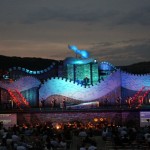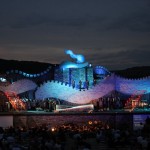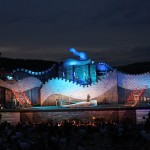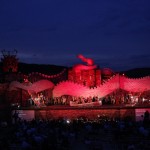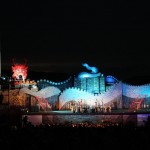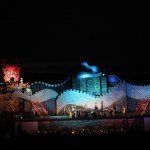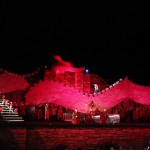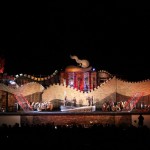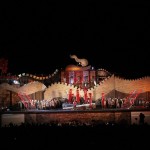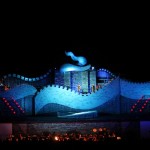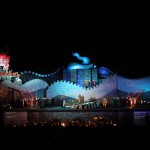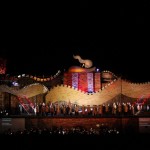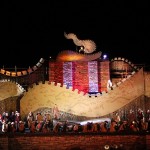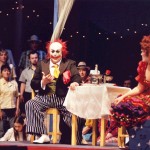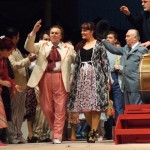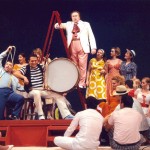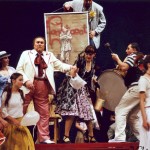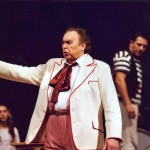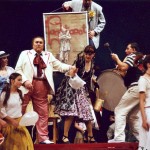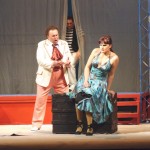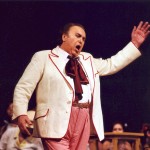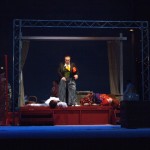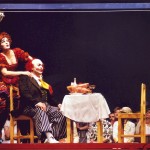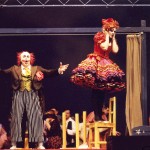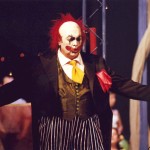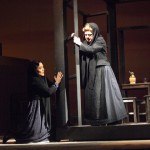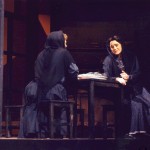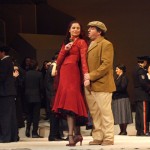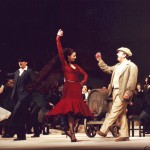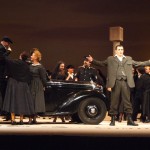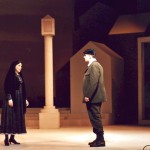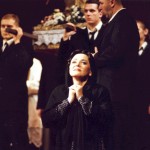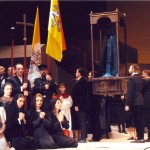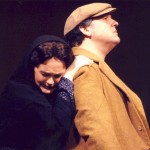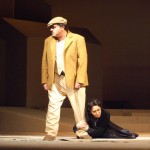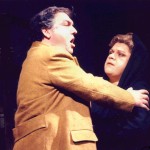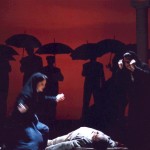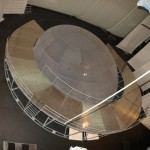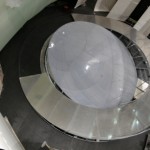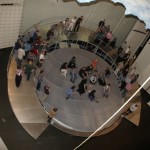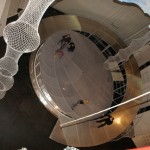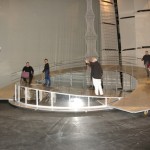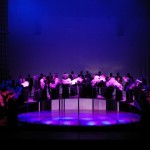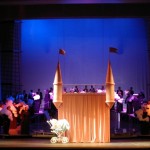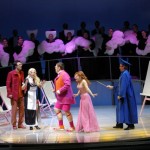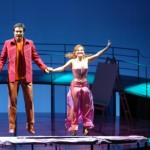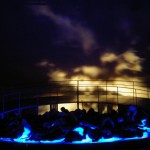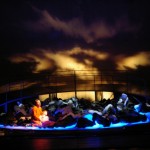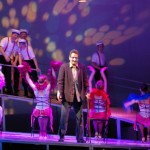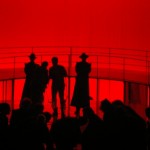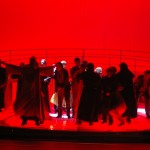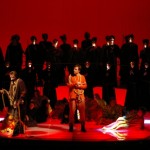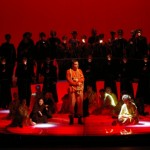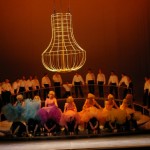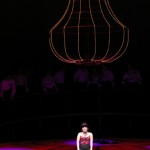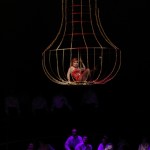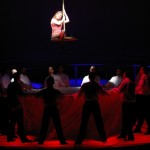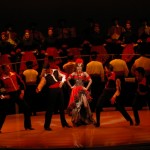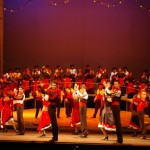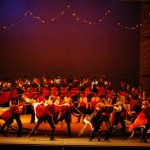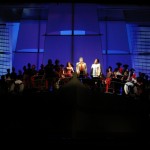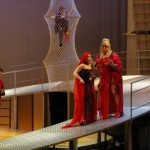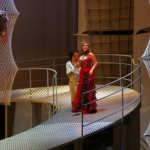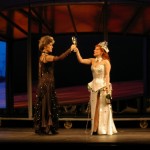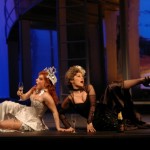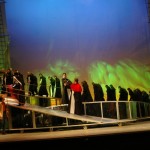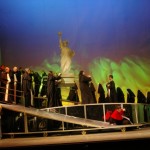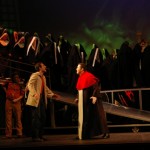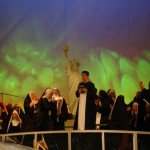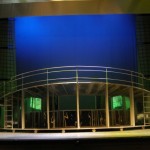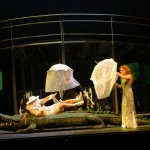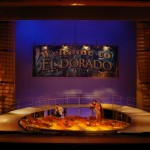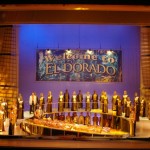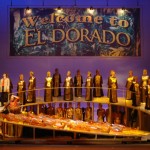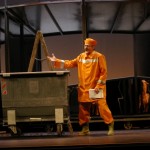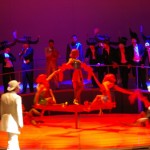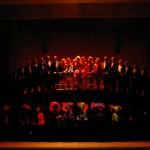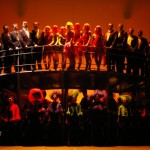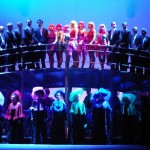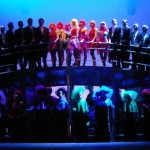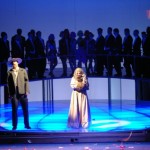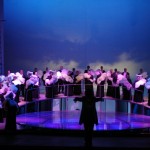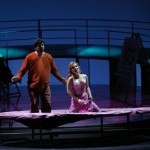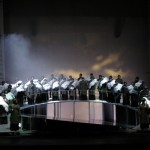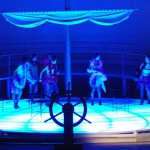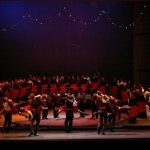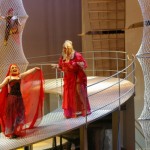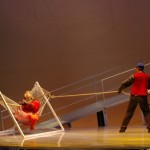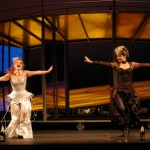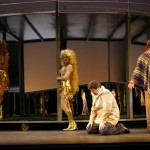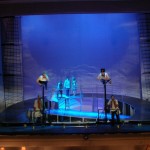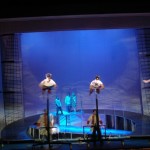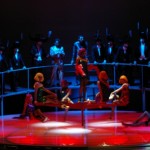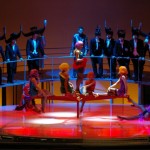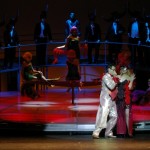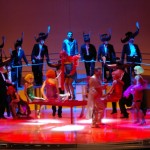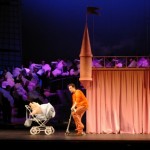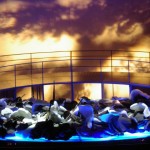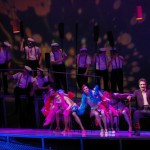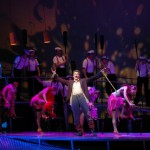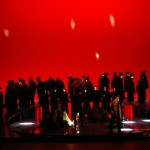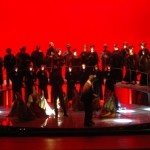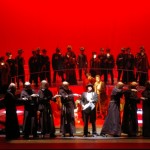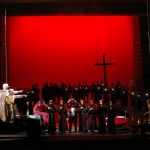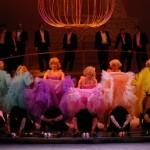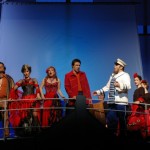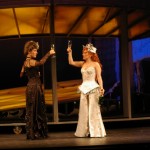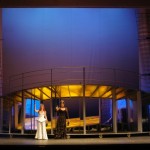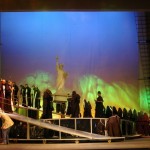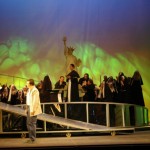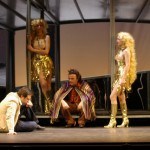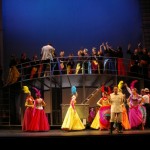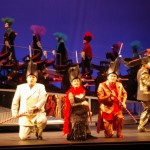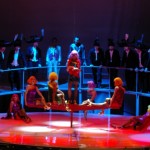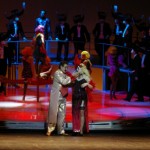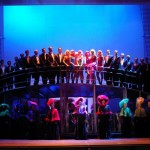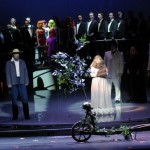PARSIFAL
A festive stage mystery in three acts
Libretto: Richard Wagner after motifs from the poem “Parsifal” by Wolfram von Eschenbach and “Parsifal or the Prince of the Grail” by Chrétien de Troyes or “Mabinogion”
Music: Richard Wagner
First performance: 26 July 1882 in Festspielhaus, Bayreuth, Germany
CHARACTERS:
AMFORTAS, King of Monsalvat – baritone
TITUREL, Founder and Former King of the Grail – bass
GURNEMANZ, Knight of the Grail – bass
KLINGSOR, a Magician – baritone
PARSIFAL – tenor
KUNDRY, a Magician – soprano
KNIGHTS – Armour-bearers of the Grail – tenors and basses
Time of action: the middle centuries
Place of action: Northern Spain
Wagner defines this last stage work of him not as an opera, but as a “festive stage mystery”. He regarded it as something like a “religious ceremony”, and not as “traditional entertainment for the music lovers”. He insisted this work not to be applauded and presented in other theatres, except in his “Festspielhaus” (“House for festive spectacles”) in Bayreuth, where according to his concept could be performed only his works.
But at the premiere the audience was permitted by Wagner to applaud at the end of Act II (while after Act I it was forbidden to do so – this ban is valid even to this day!). Only at “Metropolitan” even to this day is valid the full ban on the applauses. What concerns the ban on the presentation of “Parsifal” outside of Bayreuth, Wagner broke it in the end of his life by permitting the tenor and impresario Angelo Neumann to show it on a series of big world stages. But the foreseen premieres were not realized, except for this in Metropolitan, New York, where the production has turned into a typical American show, with much advertisement, a special train “Parsifal Express” from Chicago to New York and so on.
The religious and philosophical ideas of Wagner’s libretto are to a certain extent a mixture of Christianity and Buddhism, whereas the symbolic of the Chalice of the Grail and the Spear is still more ancient. But Wolfram von Eschenbach’s poem is Christian in spirit – the Blessed Grail is the chalice, with which Jesus drank at the Secret Supper, and after his death Joseph of Arimathea gathered in it his blood, and the Spear is with what Christ was speared at the cross.
THE OVERTURE –
is a slowly unfolding sound poem, filled with a deep religious feeling, based on the main themes: Love, Spear, Grail, Faith. Wagner made an edition of the overture, with a completed final, so that it could be included as an independent orchestra work in the programmes of the symphonic concerts, but when it is performed in the opera, the curtain raises at the dissonant chord.
SYNOPSIS
ACT I
SCENE I. Not far from the castle – sanctuary, where is kept the Holy Grail, on the Monsalvat Mountain (the Saved Mountain) in Northern Spain. In the holy wood, surrounding the castle, under the shadow of a big branched tree is sleeping the old knight Gurnemanz. The dawn slowly rises. Gurnemanz wakes up and awakens the asleep next to him young knights, armour-bearers. All of them fall on their knees in a prayer ecstasy. They have come here to help Amfortas, the King of the Grail, to perform his everyday ritual washing in the waters of the lake nearby. All of them hope this way to be relieved the pain from his incurable wound. The magician Kundry interrupts the common prayer. She, who serves at the same time the knights of the Grail and their enemy – the magician Klingsor, has brought a balm from distant Arabia, in order to help Amfortas. The King, who was brought here on a stretcher, wants to thank the young woman, although he has already lost faith that he would recover.
When Amfortas recedes, Gurnemanz tells the knights armour-bearers a part of the story of the Holy Grail. The old King Titurel, Amfortas’ father, received both holy treasures – the Chalice or the Holy Grail, from which Jesus drank wine at the Secret Supper, and the Spear, with which He was speared on the cross. To preserve them, King Titurel constructed a sanctuary (relictorium) and gathered a detachment of devoted knights to watch vigilantly over these both relics. Now Titurel has grown very old to be able to perform this holy mission, and King became his son Amfortas. But here lived someone called Klingsor. In the past, as repented sinner, he wished to become a knight of the Grail, in order to receive absolution, but the dark passions continued to rage in his soul and he gathered around him the enemies of the Grail and began to practice evil magic. With the help of a group of young beauties, who he settled in a magical flourishing garden at the place of a former desert valley, he dragged away Amfortas there. He presented to him Kundry, who turned into a beauty and, entranced by her, the young King lost hold of the Spear for a moment. The magician grabbed it and wounded badly the young King. He could be saved only if some pure and immaculate young knight succeeded to take away the Spear from the hands of the treacherous and evil Klingsor.
At the end of Gurnemanz’s story, is heard a strong cry from the side of the lake. Before the feet of the old knight falls a shot down dying pigeon. After him arrives an unknown young man and when Gurnemanz reproaches him to have done a big evil by killing the bird, the young man absolutely naively replies that he doesn’t know what evil is. This is Parsifal, who doesn’t know even the names of his parents. Kundry, however, knows more than him and tells him that his mother was dead. Gurnemanz understands that namely this naive creature will be able to save King Amfortas. And he solemnly leads him to the castle. Under the sounds of the “Music of Transfiguration” begins
SCENE II. In the huge hall of the castle of the Holy Grail have gathered all knights. The old King Titurel asks his son to continue the ceremony. In the beginning, Amfortas refuses: the wound tortures him violently, but at the end he agrees. The ceremony – communion – with the bread and the wine begins. At the sight of the Holy Chalice, Amfortas’ wound starts bleeding. Parsifal remains speechless and watches the pains of Amfortas with indifference. On the face of the young man doesn’t appear any shade of compassion! In the end of this long ceremony, the angered Gurnemanz chased Parsifal away with the judgement that he is not worthy to be proclaimed knight of the Grail.
ACT II
SCENE I. Klingsor’s possessions. The evil magician invokes Kundry to help him and, against her will, she appears in front of him. He wants Kundry to turn again into a seductive beauty, as he did in the case with Amfortas, in order to help him – Klingsor has decided to win a victory over Parsifal. Kundry must seduce the young man, the same way she deceived Amfortas before.
SCENE II. Klingsor’s magical garden. Here is Parsifal, who has just killed some of the magician’s evil knights. The maidens-beauties in service by Klingsor reproach him because of the death of the knights, who they loved. But the appearance of Parsifal is so pure and innocent, that they, conquered by his beauty and purity, go to him, disguised as flowers, ready to endow him their love and admiration. Kundry also appears, the most beautiful of them, who sends them away, in order to remain alone with the young man. She tells him about his noble father, the knight Gamuret and about his mother, Herzeleide. She informs him that his mother has given him this name, Parsifal, which means “naïve fool”. Kundry continues to pour out her love feelings and with cunning (by convincing him that she should give him a farewell kiss from his mother) she succeeds to kiss him. This fatal kiss evokes in the young man passion and together with it a feeling of compassion. Parsifal unexpectedly remembers about the hard, bleeding wound of King Amfortas and he realizes that exactly he is obliged to cure and save him. He bluntly drives Kundry back. She starts shouting and asks Klingsor for help. The magician appears at the moment and throws to Parsifal the Holy Spear. But a wonder happens: the Spear freezes in the air exactly over the young man’s head. Then he grabs it and makes a cross sign with it. Klingsor falls down in a moment, the magical garden turns into a sand desert, and Kundry falls unconscious on the ground. Klingsor loses his strength and power. Parsifal turns to Kundry and cries out: “We shall see each other again!”
ACT III
SCENE I. After many years. The young hero cannot find the way back to the sanctuary of the Grail. And the knightly brotherhood is suffering, because its leader, the still sick Amfortas is not able to perform his assigned holy mission.
A wonderful morning on the Good Friday. The very old Gurnemanz goes out of his hut at the sun. In front of the entry he finds the lying on the ground Kundry, who is almost unconscious. After Klingsor’s death, the repentant sinner has decided to serve only the knights of the Grail. After a while draws near a knight with a black chain armour and a spear in the hand. His face is hidden. Gurnemanz convinces him to take off the armours, because during the Good Friday one doesn’t carry armour at the holy place. The knight uncovers his face, falls on his knees and begins to pray. Kundry and Gurnemanz recognize Parsifal. He tells them about his fight with Klingsor, about the wounds he received fighting on the way till he reached Monsalvat. On his part, Gurnemanz tells him about the sufferings of the knights during that time, and also about the death of the old King Titurel. While listening to the story of Gurnemanz, Parsifal continuously reproaches himself that he has become a reason for all those sufferings. But the old man solemnly makes a cross sign in front of him, and Kundry washes ritually his feet with water from the lake. On his turn, Parsifal asks Gurnemanz to anoint his head. Through this blessing Parsifal becomes the new King of the Grail. The first thing he would do as such is to convert Kundry to Christianity.
In this moment Parsifal discovers for the first time the beauty of awakening nature. There sounds the wonderful “Easter music”. There sound festive bells. The three of them – Gurnemanz, Parsifal and Kundry – go to perform the last rites over the body of the dead King Titurel.
SCENE II. The majestic hall of the Grail. The knights help Amfortas to sit down on the throne. The pain from the wound is so unbearable that he just doesn’t have strength to take off the veil from the Grail and prays for only one thing – to die as soon as possible. But in this moment in front of him appears Parsifal, who tells him: “Have faith only in the weapon, it wounded you, but it will save you!” And he touches with the Spear the wound of the King. It closes and disappears in a moment. Parsifal proclaims to be the King of the Grail. He takes off the veil from the Holy Chalice, falls on his knees in a silent prayer, and the Chalice starts to emit a strong light. The voices of the knights and the boys’ chorus raise in a wonderful harmony. The deeply moved Kundry, gazing at the Holy Grail, falls dead on the floor, at last found peace and forgiveness for her sins. And when Parsifal takes the Chalice and raises it over the heads of the knights, the orchestra plays the final, conclusive measures of the opera – the transfiguration on the theme of the Holy Grail and the Secret supper.
Ognyan Stamboliev

